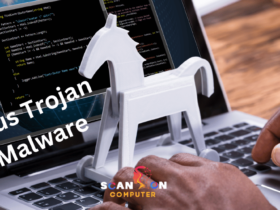Spoofing Attack: Unmasking Hidden Cyber Threats
Have you ever received an email that claimed to be from your boss, only to later discover it was forged? Or maybe you’ve landed on a website that looks strikingly like your bank’s portal—except it’s a clever fake. These are just two manifestations of the spoofing attack, one of the most versatile and dangerous cyber threats facing organizations and individuals today. Spoofing attacks have surged globally, causing billions in financial and data losses each year. They prey on trust by impersonating legitimate sources, and every digital security professional needs to understand their scope, risks, and the best prevention methods.
What Is a Spoofing Attack?
A spoofing attack involves a malicious actor pretending to be someone or something else to gain unauthorized access, obtain confidential information, or deliver malware. By exploiting trust, attackers deceive their targets through social engineering or technical trickery. Spoofing isn’t limited to email—cybercriminals can fake everything from IP addresses to phone numbers, websites, and network protocols. The ultimate goal? Trick the target into revealing sensitive data, performing financial actions, or compromising systems.
Types of Spoofing Attacks
Cyber attackers constantly innovate, devising new ways to disguise themselves. Here are the most common types security experts must watch out for:
Email Spoofing
Attackers forge email headers so messages appear to come from trusted sources like executives or IT departments. This enables widespread phishing campaigns and targeted “whaling” attacks—where top managers are tricked into wire transfers or data sharing.
IP Spoofing
By manipulating the source IP addresses, hackers can bypass network defenses, impersonate trusted systems, or flood victims with traffic (as part of DDoS attacks).
Website Spoofing
Fake websites, designed to look like those of banks, payment processors, or retailers, steal user credentials or serve malware. Victims often arrive via carefully crafted phishing links.
Caller ID Spoofing
Cybercriminals change the phone number displayed during calls, impersonating government agencies, banks, or company executives—a tactic used widely in voice phishing (vishing).
DNS Spoofing
By poisoning DNS records or responses, attackers reroute traffic from genuine to malicious websites. Victims login or make payments through look-alike portals controlled by criminals.
ARP Spoofing
Inside local networks, attackers send fake ARP messages associating their MAC address with the IP of a genuine device. This lets them intercept sensitive data or hijack sessions.
SMS/Text Spoofing
SMS spoofing involves sending fraudulent texts that appear to come from trusted parties. These usually contain malicious links or requests for private information.
Types of Spoofing Attacks and Impact
| Spoofing Type | Attack Method | Target | Common Impact |
| Email Spoofing | Forged email headers | Staff/customers | Data theft, fraud, malware |
| IP Spoofing | Faked IP addresses | Networks | DDoS, unauthorized access |
| Website Spoofing | Cloned counterfeit sites | End-users | Credential theft, malware |
| Caller ID Spoofing | Changed phone numbers | Anyone with phone | Financial/social engineering fraud |
| DNS Spoofing | Manipulated DNS responses | Web users | Traffic interception, phishing |
| ARP Spoofing | Forged ARP messages | Local networks | Intercepted data, hijacked login |
| SMS/Text Spoofing | Faked sender IDs | Mobile users | Phishing, credential theft |
How Spoofing Attacks Work?
Spoofing relies on believability. Attackers research their target, design credible fake digital artifacts—emails, websites, caller IDs—and utilize techniques like urgency or authority to manipulate victims. Most spoofing attacks blend with other cyber threats, such as phishing, malware, or business email compromise (BEC) schemes.
For example, an adversary might:
- Send a forged email from the CFO requesting a wire transfer.
- Direct a user to a spoofed bank site via DNS manipulation.
- Call an employee, appearing as the IT support desk, to obtain passwords.
The technical sophistication ranges from simple image copy-pasting to advanced protocol manipulation. But the core objective is always deception—making the victim believe they are interacting with a trustworthy entity.
Real-World Spoofing Attack Scenarios
- Business Email Compromise (BEC): Attackers pose as executives using spoofed emails, tricking staff into transferring funds or leaking sensitive files.
- Fake Banking Portals: Advanced phishing campaigns set up fraudulent login pages, stealing credentials and draining accounts.
- Government & Utility Scams: Caller ID spoofing targets citizens with calls that appear to be from tax authorities or energy providers, demanding urgent payments.
- DNS Redirection: Notorious examples include redirects to fake e-commerce or government sites for large-scale credential harvesting.
Risks & Consequences of Spoofing
Spoofing attacks cause diverse and severe risks:
- Financial theft: Funds transferred to attacker-controlled accounts.
- Reputational damage: Trust lost between customers, partners, and employees.
- Data breaches: Confidential information leaked, resulting in regulatory penalties.
- Malware infection: Systems compromised, operational disruption.
- Network breaches: Attackers pivot for deeper infiltration or persistent access.
For CEOs and security leaders, even a single successful spoofing attack can have cascading organizational and legal repercussions.
How to Prevent Spoofing Attacks?
Strengthen your defenses with these practical steps:
- Implement robust email authentication: Deploy SPF, DKIM, and DMARC to verify sender legitimacy.
- Network monitoring: Use advanced intrusion detection/prevention systems for unusual IP traffic.
- Educate staff: Regularly train everyone to recognize and report suspicious requests or links.
- Verify requests independently: Double-check financial or sensitive requests by calling known contacts directly.
- Secure DNS infrastructure: Use DNSSEC and vigilant DNS monitoring.
- Multi-factor authentication (MFA): Make credential theft harder by requiring extra verification.
- Keep software updated: Patch vulnerabilities promptly to prevent exploitation.
Practical Cybersecurity Tips & Action Steps
- Use strong, unique passwords—and never reuse them.
- Double-check URLs in messages and emails for subtle misspellings or extra domains.
- Confirm caller identities before sharing private information.
- Use encrypted communication channels for business-critical data.
- Regularly back up critical files and test restoration procedures.
- Segment networks—limit access based on need-to-know principles.
FAQ: Spoofing Attacks Answered
Q1: What is a spoofing attack in cyber security?
A spoofing attack involves impersonating trusted entities through digital, network, or communication channels to steal data or defraud victims.
Q2: What are common types of spoofing attacks?
Popular forms include email spoofing, IP spoofing, website spoofing, DNS spoofing, ARP spoofing, and caller ID spoofing.
Q3: How do I recognize an email spoofing attack?
Look for unusual senders, generic greetings, outdated company logos, suspicious links, and urgent requests.
Q4: What practical steps help prevent spoofing attacks?
Implement email authentication (SPF/DKIM/DMARC), educate users, secure DNS, and use MFA.
Q5: What can happen if a spoofing attack succeeds?
Victims may lose money, have data stolen, suffer reputational harm, or experience system compromise.
Q6: Is spoofing attack limited to emails?
No, it covers many mediums—networks, phone calls, SMS, websites, and even biometric sensors.
Q7: Should small businesses worry about spoofing?
Absolutely. Spoofing attacks affect organizations of all sizes, especially those with less mature cyber defenses.
Q8: How can CEOs and leaders proactively reduce spoofing risks?
Promote security culture, invest in technical controls, regularly audit systems, and champion ongoing training.
Conclusion
Spoofing attacks undermine trust, drain finances, and disrupt operations. Staying ahead means vigilance across multiple fronts—from employee awareness to technical safeguards. Now is the time for security professionals, industry leaders, and organizations of all sizes to prioritize spoofing defense measures.
Act today: Review your organization’s policies, test your technical controls, and educate your team. Proactive action protects assets, reputation, and the future.













Leave a Reply
View Comments